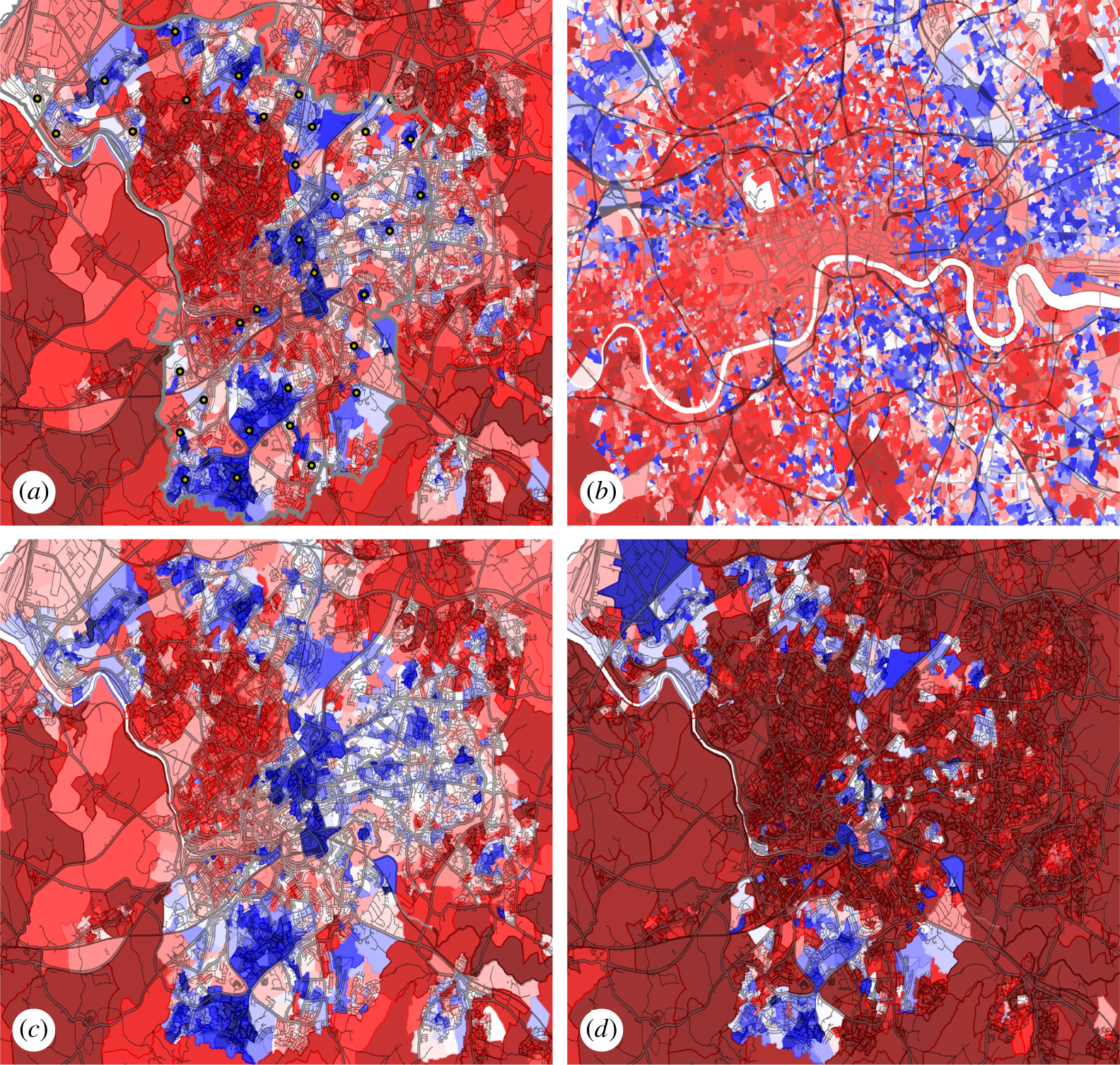Edmund Barter and Thilo Gross are scientists who apply mathematical modelling and data analysis techniques to try and better understand systems made up of many interacting parts. We talk to them about their latest research published in Proceedings A.

Edmund Barter and Thilo Gross are scientists who apply mathematical modelling and data analysis techniques to try and better understand systems made up of many interacting parts. Their focus is uncovering how a pattern of local interactions can have a strong influence on the system as a whole. Working in the Department of Engineering Mathematics at the University of Bristol they look at wide range of applications, including ecosystems, epidemics and social groups. Here, we talk to them about their latest research published in Proceedings A.
Can you summarise your paper for us?
Our new analysis of the 2011 census reveals that students and socioeconomic deprivation are the most important variables for neighbourhoods in Bristol, and other British cities.
By analysing the 2011 census data, what were you aiming to find out?
Analysis of cities often focuses on what we call “hard” properties, such as traffic management, infrastructure or planning rules. However other, “soft”, properties, such as social cohesion, atmosphere of a neighbourhood or community spirit, can be equally as important. Research has shown that soft properties have implications for residents health, economic prosperity and disaster response. We were trying to find more about these soft properties from the information in the British census.
What are diffusion maps and what can they do?
One reason for overlooking soft properties is that they are difficult to measure. Obvious quantitative descriptions of soft properties do not usually exist and it is hard to decide which other factors are important in determining them. Diffusion maps enable us to gain a better understanding finding the pattern of the most important soft properties that generate the census data. By studying these patterns we can assign human understandable descriptions to the most important, underlying, properties of the city.
Are you planning to do more analysis of the Bristol dataset?
So far we have focused on the two most important factors, the student population and socioeconomic deprivation. While we have managed to give good descriptions for these variables, that is not always guaranteed. We believe that around 40 variables may be important for describing Bristol and so there is a lot of work to do to assign descriptions to the rest. However, even without descriptions, these variables can be used in further mathematical analysis.
What information do the notable eigenfactors tell you?
The importance of students and socioeconomic deprivation in driving census responses is not necessarily surprising and to a certain extent the results confirm what many urban geographers would expect. However, with the new approach we are able to measure these properties and enumerate the differences between neighbourhoods in more rigorous way than was previously possible, and at a much finer spatial scale.
Who is this paper aimed at and what could it be useful for?
The results of the paper will be of interest to a wide audience, including scientists studying the make up of cities, those trying to predict what happens next, and policy makers who want to use the technology to better understand their domains and the potential outcomes of their interventions.
Find out more about submitting your own work to Proceedings A.



